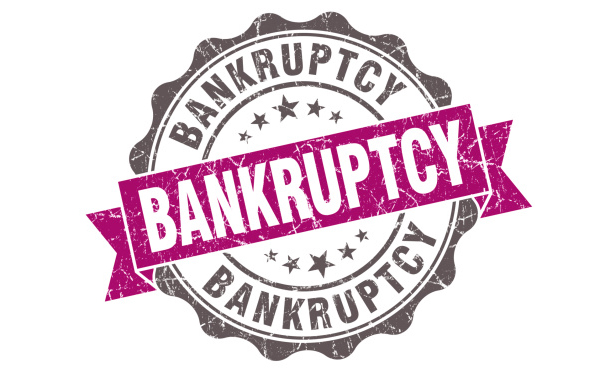Jarret P Hitchings

June 30, 2016 | The Legal Intelligencer
A Tale of Two States: Puerto Rico and Chapter 9Puerto Rico is in the midst of a financial crisis. Over the past few years, its public debt skyrocketed while its government revenue sharply declined. In order to address its economic problems and to avoid mass public-worker layoffs and cuts in public services, the unincorporated U.S. territory issued billions of dollars in face value of municipal bonds. These bonds were readily saleable to investors in the United States due to their tax-exempt status and comparatively high yields. Now, however, Puerto Rico is unable to service its extraordinary public debt and has begun to default. While the specific causes of this crisis can be debated, the U.S. Supreme Court in Puerto Rico v. Franklin California Tax-Free Trust, No. 15-233 (U.S. June 13, 2016) recently confirmed that two restructuring tools are unavailable to Puerto Rico and its distressed municipalities: relief under Chapter 9 of the U.S. Bankruptcy Code and local legislation providing for the nonconsensual restructuring of municipal indebtedness.
By Rudolph J. Di Massa Jr. and Jarret P. Hitchings
12 minute read

December 18, 2015 | The Legal Intelligencer
No Discharge of Debt Arising From Willful and Malicious InjuryPursuant to Section 727 of the U.S. Bankruptcy Code, an individual Chapter 7 debtor may receive a discharge "from all debts that arose before the date of the order for relief under this chapter." A Chapter 11 or Chapter 13 debtor may receive similar relief pursuant to Sections 1141 and 1328(b), respectively. Under any chapter, this discharge serves the Bankruptcy Code's principal goal of relieving a debtor from his or her prepetition obligations and providing the debtor with a "fresh start" on emergence from bankruptcy. Notwithstanding this goal, a bankruptcy discharge is not all-encompassing: it is limited by Section 523(a), which expressly excepts particular debts from the scope of the debtor's discharge. Among other categories, the list of nondischargeable debts includes debts arising from certain tax or customs duties, money or property to the extent obtained by fraud, domestic support obligations, and government fines or penalties. In addition, Section 523(a)(6) excepts from discharge a debt "for willful and malicious injury by the debtor to another entity."
By Rudolph J. Di Massa Jr. and Jarret P. Hitchings
6 minute read

December 18, 2015 | The Legal Intelligencer
No Discharge of Debt Arising From Willful and Malicious InjuryPursuant to Section 727 of the U.S. Bankruptcy Code, an individual Chapter 7 debtor may receive a discharge "from all debts that arose before the date of the order for relief under this chapter." A Chapter 11 or Chapter 13 debtor may receive similar relief pursuant to Sections 1141 and 1328(b), respectively. Under any chapter, this discharge serves the Bankruptcy Code's principal goal of relieving a debtor from his or her prepetition obligations and providing the debtor with a "fresh start" on emergence from bankruptcy. Notwithstanding this goal, a bankruptcy discharge is not all-encompassing: it is limited by Section 523(a), which expressly excepts particular debts from the scope of the debtor's discharge. Among other categories, the list of nondischargeable debts includes debts arising from certain tax or customs duties, money or property to the extent obtained by fraud, domestic support obligations, and government fines or penalties. In addition, Section 523(a)(6) excepts from discharge a debt "for willful and malicious injury by the debtor to another entity."
By Rudolph J. Di Massa Jr. and Jarret P. Hitchings
6 minute read

June 19, 2015 | The Legal Intelligencer
Numerosity Requirement for Filing Involuntary Bankruptcy PetitionSection 303 of the Bankruptcy Code provides creditors with a mechanism to force a recalcitrant debtor into bankruptcy through the filing of an involuntary petition for relief. Pursuant to this section, an involuntary bankruptcy case may be commenced only under Chapter 7 or 11 of the Bankruptcy Code, and may only be brought against a person otherwise qualified to file a voluntary petition. Where the purported debtor has fewer than 12 creditors, the involuntary petition need only be filed by a single creditor. However, where the purported debtor has 12 or more creditors, the involuntary petition must be filed by at least three creditors.
By Rudolph J. Di Massa Jr. and Jarret P. Hitchings
7 minute read

June 18, 2015 | The Legal Intelligencer
Numerosity Requirement for Filing Involuntary Bankruptcy PetitionSection 303 of the Bankruptcy Code provides creditors with a mechanism to force a recalcitrant debtor into bankruptcy through the filing of an involuntary petition for relief. Pursuant to this section, an involuntary bankruptcy case may be commenced only under Chapter 7 or 11 of the Bankruptcy Code, and may only be brought against a person otherwise qualified to file a voluntary petition. Where the purported debtor has fewer than 12 creditors, the involuntary petition need only be filed by a single creditor. However, where the purported debtor has 12 or more creditors, the involuntary petition must be filed by at least three creditors.
By Rudolph J. Di Massa Jr. and Jarret P. Hitchings
7 minute read

March 20, 2015 | The Legal Intelligencer
SEC Temporary Asset Freeze Not Barred by Automatic Stay ProvisionsIn an effort to protect the property of a bankruptcy estate, Section 362(a) of the U.S. Bankruptcy Code imposes an automatic stay on most proceedings against a debtor in bankruptcy. The policy of this section is to grant relief to a debtor from creditors, and to prevent a "disorganized" dissipation of the debtor's assets. (See, e.g., U.S. Securities and Exchange Commission v. Brennan, 230 F.3d 65, 70 (2d Cir. 2000).)
By Rudolph J. Di Massa Jr. and Jarret P. Hitchings
7 minute read

March 20, 2015 | The Legal Intelligencer
SEC Temporary Asset Freeze Not Barred by Automatic Stay ProvisionsIn an effort to protect the property of a bankruptcy estate, Section 362(a) of the U.S. Bankruptcy Code imposes an automatic stay on most proceedings against a debtor in bankruptcy. The policy of this section is to grant relief to a debtor from creditors, and to prevent a "disorganized" dissipation of the debtor's assets. (See, e.g., U.S. Securities and Exchange Commission v. Brennan, 230 F.3d 65, 70 (2d Cir. 2000).)
By Rudolph J. Di Massa Jr. and Jarret P. Hitchings
7 minute read

December 19, 2014 | The Legal Intelligencer
Creditor's Claim for Attorney Fees Not Entitled to Secured StatusThe "American rule" is a well-defined legal principle applied by courts throughout the United States that holds each party to a dispute responsible for paying its own attorney fees. This principle is, however, subject to a number of exceptions that effectively allow a prevailing party to recover its own attorney fees from a losing party. For example, federal and state statutes increasingly authorize a prevailing party to recover costs from its adversary in certain types of actions. Likewise, contracting parties often incorporate "fee shifting" terms that provide for recovery of litigation costs by one party in the event of litigation on the contract. In other circumstances, a court exercising its own discretion may award a prevailing party its attorney fees as part of the judgment.
By Rudolph J. Di Massa Jr. and Jarret P. Hitchings
8 minute read

August 01, 2014 | The Legal Intelligencer
Inherited IRA Not 'Retirement Funds' Subject to ExemptionWhen an individual debtor files a petition under the Bankruptcy Code, all property in which the debtor has a legal or equitable interest becomes part of the debtor's bankruptcy estate. Creditor claims against the debtor are generally recoverable from property and funds included in this estate.
By Rudolph J. Di Massa Jr. and Jarret P. Hitchings
8 minute read

March 21, 2014 | The Legal Intelligencer
Claim for Contractual Prepayment Consideration DeniedIn today's financial market, institutional promissory notes with fixed rates almost always include terms that concern payment of the note in advance of its maturity date. For example, certain provisions may outline the circumstances in which a borrower may prepay amounts due under the note.
By Rudolph J. Di Massa Jr. and Jarret P. Hitchings
7 minute read
More from ALM
- Scan In Progress: Litigators Leverage AI to Screen Prospective Jurors 1 minute read
- Legal Speak at General Counsel Conference East 2024: Match Group's Katie Dugan & Herrick's Carol Goodman 1 minute read
- Legal Speak at General Counsel Conference East 2024: Eric Wall, Executive VP, Syllo 1 minute read



